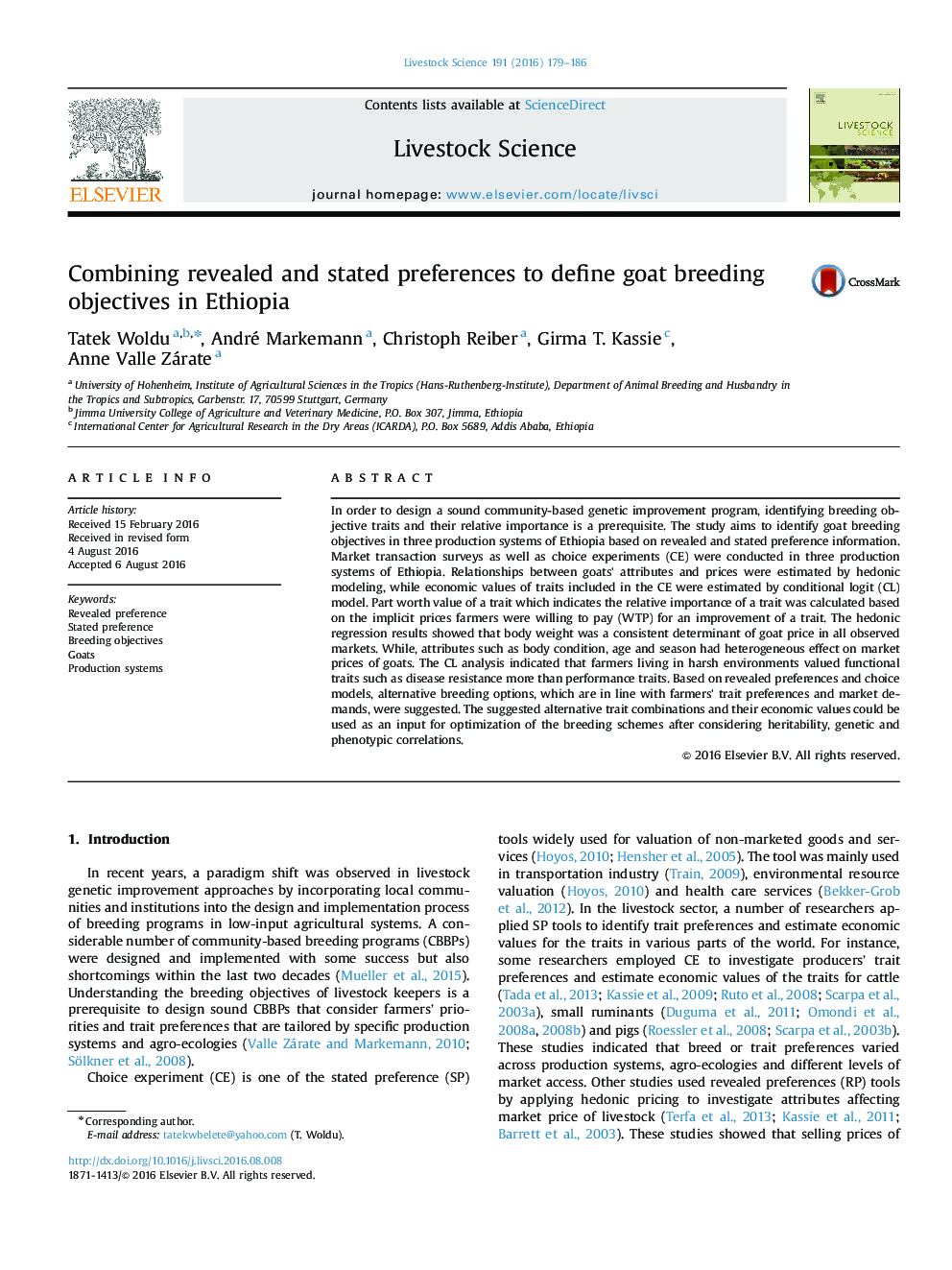| Article ID | Journal | Published Year | Pages | File Type |
|---|---|---|---|---|
| 5789918 | Livestock Science | 2016 | 8 Pages |
â¢Implicit prices of goat traits estimated by combining revealed and stated preferences.â¢Willingness to pay approach employed for determining part worth values of traits.â¢Breeding options that considered market demands and producers preferences suggested.
In order to design a sound community-based genetic improvement program, identifying breeding objective traits and their relative importance is a prerequisite. The study aims to identify goat breeding objectives in three production systems of Ethiopia based on revealed and stated preference information. Market transaction surveys as well as choice experiments (CE) were conducted in three production systems of Ethiopia. Relationships between goats' attributes and prices were estimated by hedonic modeling, while economic values of traits included in the CE were estimated by conditional logit (CL) model. Part worth value of a trait which indicates the relative importance of a trait was calculated based on the implicit prices farmers were willing to pay (WTP) for an improvement of a trait. The hedonic regression results showed that body weight was a consistent determinant of goat price in all observed markets. While, attributes such as body condition, age and season had heterogeneous effect on market prices of goats. The CL analysis indicated that farmers living in harsh environments valued functional traits such as disease resistance more than performance traits. Based on revealed preferences and choice models, alternative breeding options, which are in line with farmers' trait preferences and market demands, were suggested. The suggested alternative trait combinations and their economic values could be used as an input for optimization of the breeding schemes after considering heritability, genetic and phenotypic correlations.
